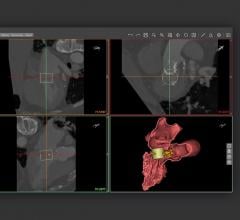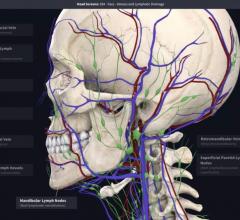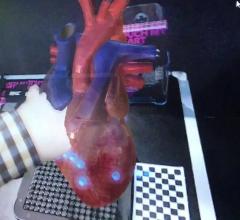Based on my observations and the devices that caught the eye of the doctors on the Diagnostic & Interventional Cardiology Editorial Advisory Board, we created the following predictions of what will be hot trends to watch in 2011. These were some of the big topics and new technologies highlighted at the Transcatheter Cardiovascular Therapeutics (TCT) symposium in September, and the American Heart Association (AHA) and the Radiological Society of North America (RSNA) meetings in November.
• Percutaneous valves: These devices are now a reality in Europe and will be coming to the U.S. market shortly. The first results from the U.S. PARTNER trial presented at TCT for the Edwards Sapien aortic valve were very positive. In December, Medtronic began its first U.S. implants of the CoreValve aortic valve as part of the U.S. pivotal trial.
• Robotics in the cath lab: The Davinci system has made a dramatic impact on urologic practice and Stereotaxis and Hansen are vying for the electrophysiology market. The first in-human study of the robotically assisted percutaneous coronary intervention system demonstrated that the technique is safe and feasible. The results of the study of the CorPath 200, by Corindus Vascular Robotics, were presented at TCT. The system allows interventional cardiologists to sit down without radiation protection and remotely manipulate catheters, wires, balloons and stents from the control booth.
• Advanced cath lab imaging: The introduction of rotational angiography in the cath lab with a rapid rotation of the imaging arm creates dynamic CT-like 3-D imaging, which can be used as an overlay with routine angiographic imaging. The technology allows for real-time CT superimposition, allowing for more accurate endovascular work and might become a routine part of any endovascular suite. This type of technology might also be useful at defining physiology, such as ischemia. Other advances include improved hybrid overlay images from various imaging modalities and live angiography for better transcatheter navigation.
• Percutaneous renal nerve ablation: This was discussed as a new treatment to reduce blood pressure. Data from Ardian’s Symplicity HTN-2 trial of its renal ablation catheter was presented at AHA. It showed after six months, patients treated with Ardian’s device experienced an average drop in blood pressure of 32/12 mmHg compared to an increase in blood pressure of 1/0 mmHg in the control group of patients treated with medical therapy alone.
• Left atrial appendage (LAA) occlusion devices: These transcatheter occluders are designed to prevent atrial fibrillation-induced emboli and replace the current standard of warfarin therapy. The CoHerex WaveCrest has an improved design over previous devices that have been tested and is entering first-in-man trials in 2011.
• iPad integration of picture archiving and communication systems (PACS): Healthcare software vendors are introducing a large variety of new apps for the iPad, including advanced visualization software and access to PACS and cardiac reporting software. The iPad frees clinicians from their desktop computer and allows them to work from any location with Internet access. The small size of the device means it can be carried around like the traditional clipboard, but offers all the functionality of their primary computer workstation.
• PET/MRI: The first two combined positron emission tomography/magnetic resonance imaging (PET/MRI) systems were introduced at RSNA by Philips and Siemens. These systems have the potential to greatly reduce radiation dose by eliminating CT scans in hybrid imaging, which have been used for attenuation correction and for an anatomical overlay to the PET metabolic imaging. Both systems are pending FDA clearance.
• 3-D hearts in motion: Advanced visualization can make pretty pictures of 3-D anatomy, but in the case of the heart, it has so far failed to show functionality and natural movement during the cardiac cycle. Using supercomputing algorithms, Ziosoft developed the PhyZiodynamic software to take a CT or MRI data set of a cardiac cycle and put it into motion. The software allows a full 3-D rendering of a heart in motion that can be sliced through and rotated on any axis. It also has an option to show a color-coded tissue strain map.

 May 12, 2020
May 12, 2020 








